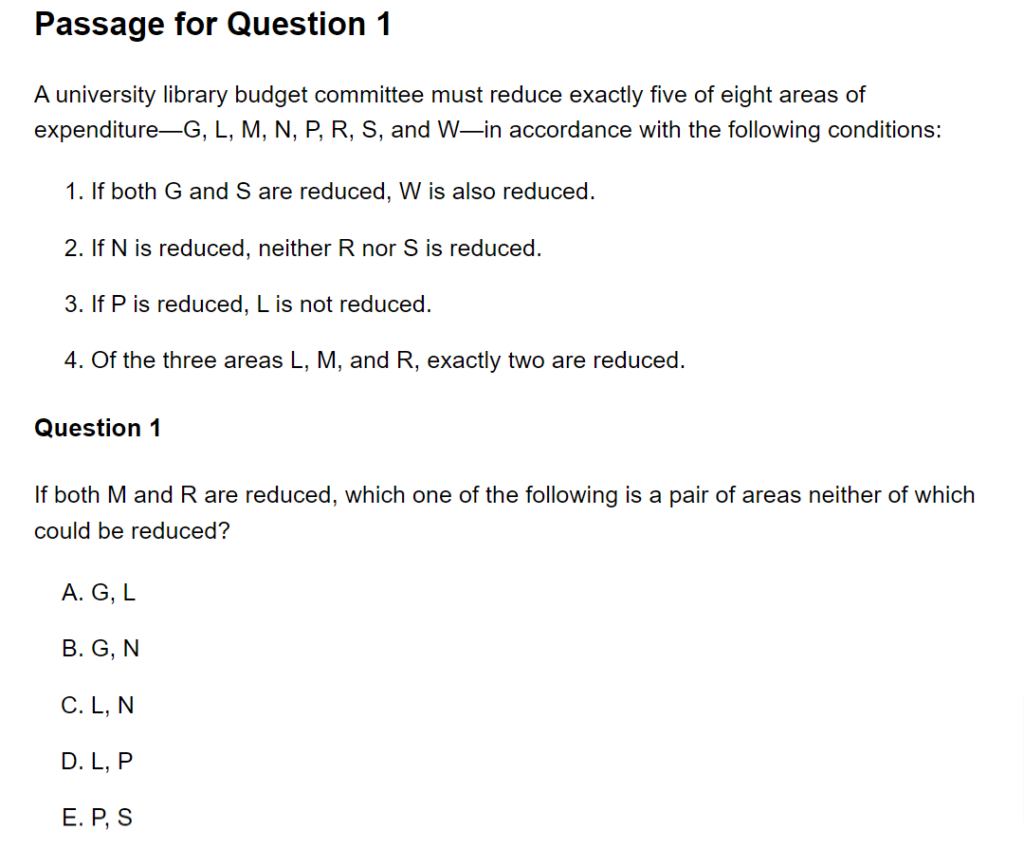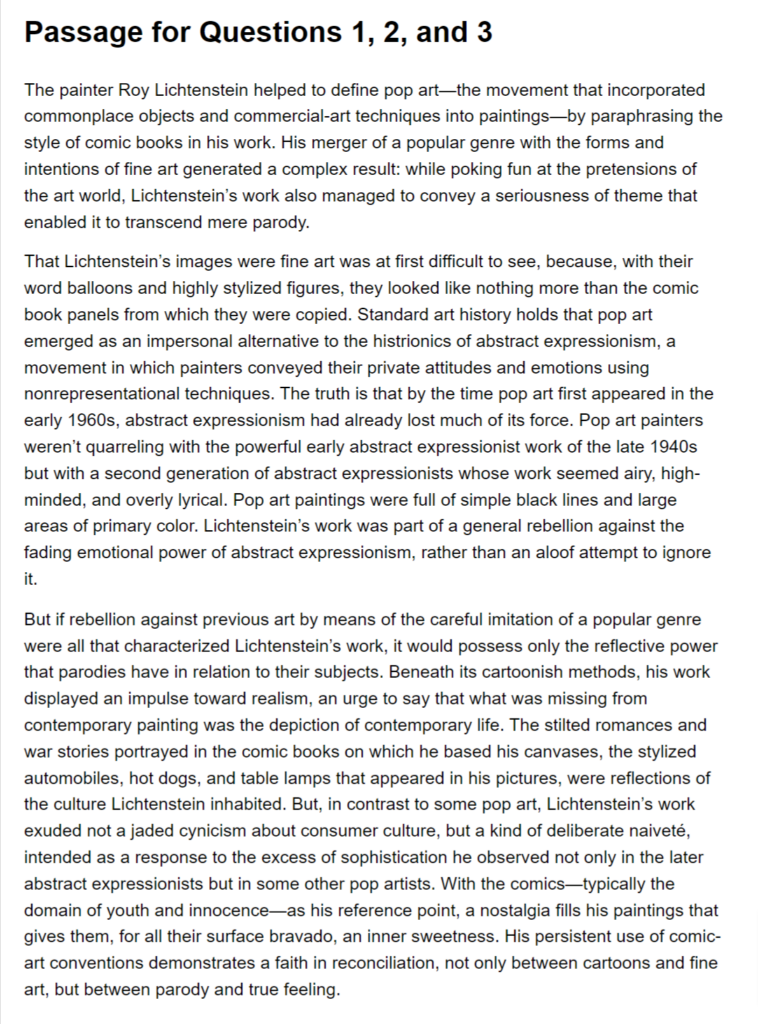Many examinees find the LSAT difficult because it differs from other standardized tests. It deceives, tricks, and exhausts.
The LSAT forces students to apply the best of their critical thinking skills. But even that isn’t enough to describe the challenges of this exam.
Keep reading to understand exactly how hard the LSAT is.
Quick Summary
The LSAT is a challenging exam, with only 3% of test takers scoring 170 or above. Here are the most important things you have to remember about it:
- The test is long-winded, tricky, and fast-paced. That is why many have difficulty with it.
- The hardest LSAT section for most students is analytical reasoning. Meanwhile, reading comprehension is the easiest.
- The average LSAT score is 150+. However, you can practice and enhance your skills to gain a higher score.
- There are many tips you can follow before and during the exam to ensure a high LSAT score.
How Hard Is the LSAT?
The LSAT is notorious for its difficulty. Many students have had to retake the exam, just to get a more competitive score.
This section outlines some of the reasons this exam is so hard that only a few score 170 or above. It will also highlight the hardest and easiest sections, as well as how long it takes to prepare for the LSAT.
What Elements Make the LSAT So Challenging?
The LSAT is intentionally difficult, as it has to test for critical thinking skills rather than memorized facts. Such a goal requires unique question types that most students may not have encountered during their pre-law or basic education programs.
For instance, logic games questions are often novel to LSAT prep students. It’s like a puzzle but in words, so unique thinking is critical to finding the answer.
To add to all of those, there is a time limit. Thus, students cannot spend all their time trying to crack the code.
1. Test Design
The test makers designed LSAT questions to be challenging and deceiving. So, you can’t just recall a fact or apply a formula to answer a question.
Instead, you’ll be reading too short or too-long passages. Details will either be too much or too little.
The choices are also confusing. They sound like variations of each other, so you won’t know which is right.
All this trickery is intentional. In law school (and later, practice), students have to sift through tons of unnecessary information to identify relevant facts.
They will then use those facts to come up with logical arguments and fair defenses. They also have to figure out which laws are most applicable to their case.
All these tasks are not easy, as it’s not always clear which details are irrelevant. Logical arguments are also not that easy to come up with.
So to ensure that aspiring law students have the skills, critical thinking, and endurance the profession demands, the LSAT was created like a maze. Its tough questions force students to showcase their best critical thinking skills.
In the end, those able to work through all the chaos, earning fair to high scores, are more likely to survive law school.
2. Unfamiliar Questions
The LSAT consists of the following scored sections:
- Logical reasoning
- Analytical reasoning
- Reading comprehension
Unfortunately, most of those skills and questions are not taught at school.
For instance, logic games or reasoning subjects are not subjects in school. Most often, they are skills students have to sharpen just for the LSAT.
So, many students feel thrown off by the unfamiliarity. The variety of question formats also adds to the confusion.
You can overcome that. In your practice, familiarize yourself with the skills and their questions.
Once you are aware of their types and patterns, it’s easier to approach their answers.
3. Time Constraints
There are only thirty-five minutes per section. There’s also ten minutes for one break.
As there are around 100 questions across the test, examinees only have a minute to answer each item.
Such time constraints can be pressuring, especially for untrained students. The anxiety of doing everything quickly can make them forget all they learned.
Which Is the Hardest Section on the LSAT?
Most LSAT takers find analytical reasoning as the hardest section of the exam. You may also know it by its other term: logic games.
This section has around four passages. Each has a specific set of elements.
There are also conditions dictating the elements’ order, grouping, and subsets.
Here is a sample question from the LSAC:

What makes this section hard is that it requires detailed analysis.
You must comprehend the passage and question, which aren’t written in a simple manner. Your answer must also meet both the passage’s and question’s conditions.
Comprehending and selecting an answer is time-consuming. Even more so when you’re unfamiliar with these questions.
But it doesn’t always have to be that hard. Logic games are practicable. You can review past games and their answers.
You can also take many practice tests. These efforts will allow you to detect patterns and formulae you can use with the exam.
Which Is the Easiest LSAT Section?
The reading comprehension section may be the easiest. Part of that may be because it’s the most familiar to students.
At some point in their schooling, they have had to read passages. Then, they’ll identify the main points or answer questions based on their reading.
However, the LSAT passages are more complex than school reading. Here is a sample passage from the LSAC:

As you can see, these passages feature complex jargon. They’re also long-winded and packed with a lot of unnecessary information.
Such complexity isn’t just for challenge, though. They have to replicate the quality of material students may encounter in law school.
So, you have to expand your lexicon. Most of all, you need to manage your time.
Many don’t manage their time well during reading comprehension. They spend most of it reading the text.
That leaves them little time to analyze or answer the questions. So, you must strike a balance to ace this part of the LSAT.
Why Is It Hard To Get a 170 on the LSAT?
Scoring 170+ in the LSAT is such a challenge, that only 3% of test takers are able to achieve that. However, it is not impossible.
To achieve such a high score, you first need to understand the LSAT scoring system. Then, you need to identify the reasons why students have difficulty getting 170.
Finally, you establish a solid plan for getting an LSAT score of 170 for yourself. In this section, we’ll help you out with all of those.
LSAT Scoring System
The LSAT scoring system is intricate. The raw score is converted into a scaled score, which ranges from 120 to 180.
The conversion is done through a process called equating. The LSAC does not reveal its formula for equating. However, the byproduct of it is quite apparent.
For some tests, you can make more mistakes but still get a 170. That has led some to believe that getting such a high score is more about luck.
However, it isn’t really. The reason some tests have more leeway is that they are harder than others.
If the number of mistakes allowed for a 170 is the same all throughout, that would be unfair to examinees who chanced upon a harder test.
The challenge of Getting a 170
Now, the scoring system makes it so that a 170 is hard to get whichever exam you take. But why is it even hard in the first place?
Even during LSAT prep, many students find it hard to progress from 160+ to 170+. They reach a score plateau.
Well, the main reason for that is that such high scores require extreme preparation, not just standard study plans. The LSAT is a highly unique exam, with questions differing every year.
So, just taking as many practice tests as possible, attending all prep classes, and reading all the books is not enough. Those study tactics may allow you to see some of the patterns that will land you an average to 160+ score.
But to get a 170+, you need to shape your mindset. That is, you do not just accept and apply the techniques and patterns taught to you.
You understand the process and logic behind these techniques and patterns at such a deep level that you are able to refine them. Then, you utilize your refined techniques over and over until it becomes second nature to you.
That part is so hard to do because it requires a combination of grit, time, and creative and critical thinking. It also requires you to focus away from seemingly important factors.
How to Get a 170+
To achieve an LSAT score of at least 170, you need to disregard some popular studying techniques. You may also have to establish some new habits.
So, here are some tips you can follow to get a 170+ in the LSAT:
1. Master the sections.
Mastering the LSAT sections means knowing how to answer single every question type that may appear during the exam. This takes a lot of practice.
The best way to go at it is with a prep book and drills. Many students recommend the PowerScore LSAT bibles as prep books.
Go through each of the questions and try to answer them correctly. If you make mistakes, that’s alright – just understand where you went wrong and correct yourself.
If there’s a question you don’t know how to answer, study similar questions. Then, understand the best method for the solution.

You should not leave a stone uncovered. That is, do not skip a question just because you didn’t know how to answer it at first.
While you’re still prepping, it’s an opportunity to learn what you don’t know. Discover the strategy behind those unfamiliar questions, so that when you’re taking the test, you already know how to deal with them.
Many LSAT prep books or question banks come with explanations for the answers. Take advantage of those.
2. Keep moving forward.
The LSAT is still a timed test. Thus, you can’t dilly-dally in the exam hall; you need to get through each of the questions.
Thus, if there’s one question that seems to be taking your time, skip it. Move forward and get through the fast and easy items.
Hopefully, you’ll have time to spare and be able to go back to the questions you’ve skipped. But if you don’t, at least you were able to answer as many as you could have than just wasting time on one item.
3. Perfect your timing.
With only 35 minutes per section, it seems apparent that you’ll have to be quick in the exam. But being quick doesn’t mean rushing through.
Rushing can make you careless with your answers. Instead, what you need is to perfect your timing.
You need to be fast enough to get the correct answer in time. However, you shouldn’t be too eager to skip all the important details.
To perfect your timing, it’s best to take several full-timed practice tests. It will get you used to the exam’s fast-paced nature.
However, it will also give you an idea of how much time you can spare to analyze and answer each section. It will allow you to build a plan and develop strategies to get through each item without missing a beat.
How Long Does It Take To Study for the LSAT?
Studying for the LSAT involves learning new concepts, especially the logic behind questions, and techniques. It also includes answering tons of practice tests and questions.
Most of all, prep is dedicated to refining your skills and knowledge. So, if there are concepts you find challenging, you’ll have to study them again and again until you understand them.
With every question and test you take, you have to review your answers. You need to understand why you came up with your answers, and why the correct answer is correct.
With so many things to do, it takes around three months to prepare for the LSAT. Usually, students allot two to four hours per day to study.
However, the optimal study duration varies from person to person. Some feel well-prepared even though they only studied for one to two months.
Meanwhile, others did not find three months enough. Instead, they’ll spend a year covering all the fundamental and advanced tips.
Such variability is because the LSAT preparation process is highly personal. Some people may already have an aptitude for certain parts of the exam, such as logic games.
So, they won’t need as much time to study as they won’t have to study logic games or review questions as often as beginners.
Therefore, it’s important you understand where you start. Identify your baseline, which is your first practice score, weaknesses, and strengths.
How To Make the LSAT Less Challenging
The LSAT is difficult. However, it is only impossible for those who did not even make an effort to prepare.
Thus, if you want to do well – even ace – the LSAT, you need to undergo intense preparation. The best way to do that is to learn from previous examinees, especially top scorers.
They have developed effective strategies and unlocked secrets to acing the LSAT. We’ll share some of them in this section.
How To Efficiently Prepare for the LSAT Exam
Here are some ways you can prepare for the LSAT exam:
1 Blind Review for Your Prep
Blind review is becoming a popular technique among LSAT examinees. That’s mainly because it’s effective.
In a blind review, you go back to the answers you were not 100% sure of. You also return to the questions you left blank,
In going back, you do not limit yourself to time constraints. You also should not have consulted the answer key.
Instead, you just go through each question and choose a solid answer. It’s not necessarily one that is correct.
A solid answer is one you can support with logical reasoning. It may be correct or not, but it trains your brain to find answers with logic rather than gut.
Once you’ve gone through all those answers or questions, check the answer key. See the ones you got right and wrong.

Understand why they were so. Carefully understand the question’s structure and the thought process that leads to the answer.
If there were any misconceptions or reasonings you made, correct them immediately so you won’t repeat them.
2. Practice with a Purpose
Whether you choose to self-study or use a prep course, you must have a purpose. But how so?
First, establish your baseline and target scores. For the former, you can take a blind practice test, and the result will be your baseline.
For the target score, research the scores your dream law school accepts. For instance, if you’re aiming for Yale University Law School, your LSAT score must be around 175.
Let’s say you have both target and baseline scores. You must draw a plan to get you from your baseline to your target.
That plan includes the number of study hours, the skills you must focus on, and how to enhance them. It also involves taking many practice exams.
But you don’t just take as many tests as you can. You also must review each test, identify your gaps, and address them before taking the next one.
Remember, it’s the quality – not quantity – of your review that helps you achieve a 170+ score.
3. Simulate the LSAT
It’s recommended that you simulate the LSAT before you take the actual exam. It will make you feel more prepared and less anxious.
To simulate the exam, you can enlist the help of friends and family. Ask them to stay in a virtual or actual room so they’ll act as other test takers.
Then, assign another friend to be the proctor. Ask them to keep time or even disturb you now and then with clarifications or warnings.
If you take the test virtually, you can also simulate a poor internet connection. This a problem many test takers don’t expect, so they get thrown off when that happens.
Tips and Strategies to Ace the LSAT
The above tips are for when you’re still preparing for the LSAT. How about when you’re taking it already?
Here are strategies you can apply:
1. Don’t Leave a Blank Question
Unlike some exams, there’s no penalty for guessing in the LSAT. Thus, if you don’t know the answer to a question, you can guess.
If you’re lucky enough, you’ll get it right. If not, then you won’t lose any marks.
But if you want your guess to have a greater chance of turning out right, do it strategically.
Identify and remove the wrong choices. Then, if you’re down to two or three options that are possibly correct, choose from them.
2. Read the Questions First
Most passages in the LSAT are information overload. It’s your job to sift through all the data and determine which is relevant.
But that’s time-consuming. To avoid wasting your time, you can read the questions first.
That way, you’ll know what kind of information you need. Then, when you read or skim the passage, you can identify which details are critical.
3. Prioritize Easy Questions
All questions weigh the same in the LSAT. Your correct answer for a difficult question contributes as many points as an easy one.
So it’s best to exhaust all easy questions before taking on the harder ones. You’re more likely to get them right than the difficult questions.
4. Focus On a Solid Argument for LSAT Writing
Writing used to be a section taken with the multiple choice sections. Now, it’s a separate test and not required from those with a writing sample on their file.
Unlike the multiple-choice sections, there is no score for writing. So, it’s easy to think you can focus less on it than the others.
But you’ll also need to bolster the writing section to ace the LSAT. It is part of the deliberations of your law school admission.
So, how do you ace LSAT writing?
First, you can do away with fancy jargon. Instead, focus on building your argument.
Make sure your logic is solid. Also, construct your sentences so your thoughts are clear.
Law schools want to see how well you can deliver and prove your point. Even if your essay sounds fancy, it won’t attract them if it doesn’t make sense.
5. Flag Questions Strategically
If you’re taking the LSAT online, you can flag questions. It will help remind you if there are things you need to look back on.
But flagging every question you’re doubting or skipping isn’t recommended. It will make you anxious as you see more flags.
Instead, flag only these questions:
- Questions you know will take time to answer.
- Questions you don’t understand or can’t process.
Both these questions are best reserved for later when you have extra time. If you deal with them as soon as you see them, you’ll lose time that could’ve been for easier items.
FAQs About the Difficulty of the LSAT Test
How Hard Is LSAT Compared to SAT?
Both the LSAT and SAT are standardized tests. But the former is more challenging than the latter.
The SAT evaluates skills that most schools teach to students. For instance, the questions in SAT Math are likely to have been discussed already.
Meanwhile, the LSAT tackles particular skills that schools did not hone. For example, many people find logic games, as it’s not a subject they often have.
So, you can’t rely on your memory to take you far on the LSAT. You must prepare for it, especially if you aim for a high score.
Is There Math on the LSAT?
There is no math section on the LSAT, unlike the SAT. Therefore, you won’t have to worry about numbers, equations, or mathematical concepts.
How Do I Train My Brain for the LSAT?
Training your brain for the LSAT involves changing your mindset. You transform your everyday thinking so you’re more analytical and logical, rather than driven by gut or intuition.
You do not just apply such a mindset in your actual LSAT prep, such as taking practice exams. Rather, you extend it to your everyday life.
For instance, when you make a purchase, argue with yourself. Establish a logical reasoning that justifies your purchase.
When you voice your opinion on something, try to be critical. Aim to present a statement that is not driven by emotions, but based on facts.
Overall, you already need to start thinking and acting like a lawyer, even before you’ve taken the exam. It’s the best way to prepare yourself for the test, program, and, eventually, career.



